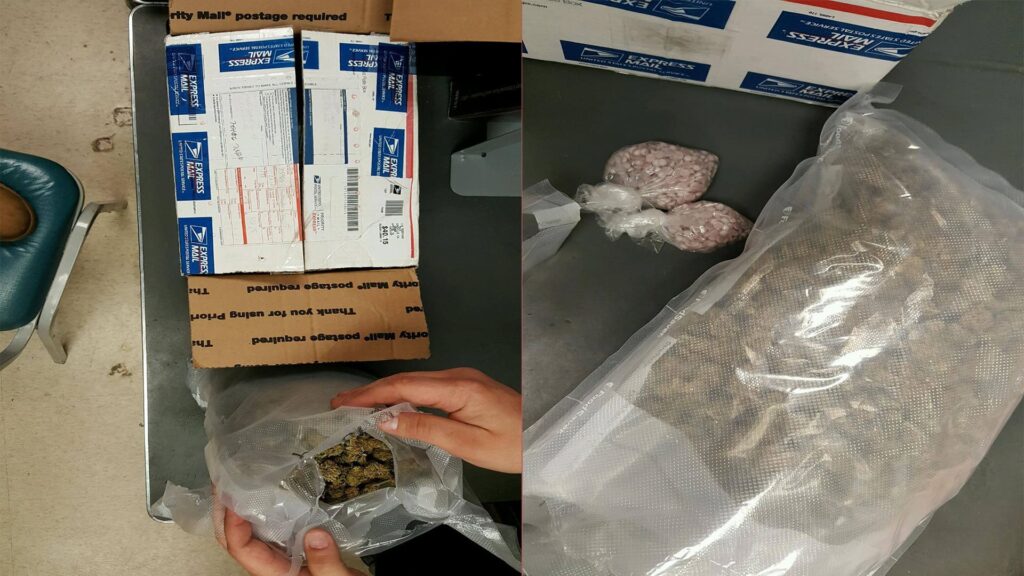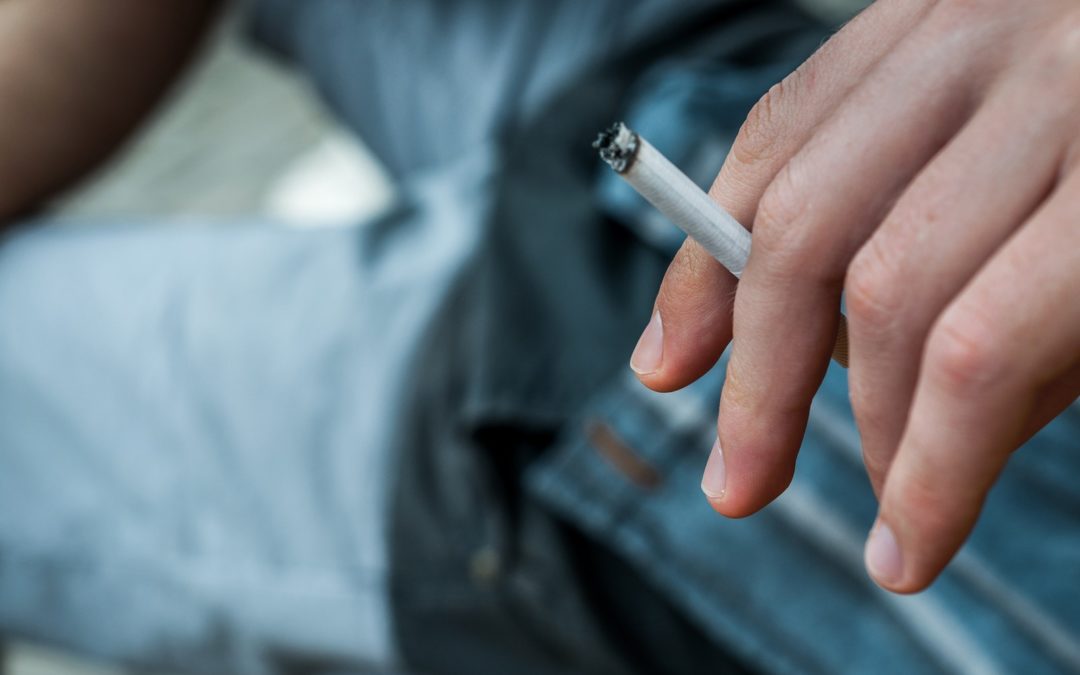Table of Contents
- Key Takeaways
- The Role of Social Media in Teen Drug Use
- Social Media Platforms Popular Among Teens
- Mental Health and Social Media
- Increased Access to Drugs Through Social Media
- Congress Intervenes: A Proactive Approach to Addressing the Issue
- Strategies for Parents and Educators
- Treatment Options for Teens Struggling with Substance Abuse
- Summary
- Frequently Asked Questions
Social media has undeniably transformed how teens interact with the world and each other, but how does social media facilitate the consumption of drugs in teens? This critical issue involves a blend of factors, including peer influence, easy access to substances, and the glamorization of drug use by popular online figures. Our exploration uncovers how teenagers’ scrolling habits may inadvertently lead to the normalization and trial of substances, opening discussions on safeguards against these virtual trends.

Key Takeaways
- Social media platforms inadvertently facilitate substance abuse among teens by normalizing and glamorizing drug use, often exacerbated by influencers and targeted marketing, which can lead to risky behaviors and the potential for addiction.
- Excessive social media use can negatively affect teens’ mental health, lowering self-esteem and contributing to anxiety and depression, making them more susceptible to using drugs or alcohol as coping mechanisms for their emotional distress.
- While social media provides a means to connect, it also gives teens increased and dangerous access to drugs through direct communication with dealers and anonymous online marketplaces, underscoring the need for parental monitoring and open discussions about the risks.
The Role of Social Media in Teen Drug Use
The relationship between social media and substance abuse among young people is an intricate web. Social media platforms, with their vast reach and influence, have unintentionally become a platform for the normalization of substance abuse.
The omnipresence of social media in teens’ lives creates an environment where drug use seems commonplace, due in part to its frequent depiction and discussion on these platforms.
We will now examine the specifics of this phenomenon.
Social Media Platforms Popular Among Teens
A staggering 95% of teens are active on social media sites, including social networking sites, with over a third reporting ‘almost constant’ use. Platforms like:
- TikTok
- Snapchat
- YouTube
- Twitter (X)
Social media platforms have become integral parts of young adults’ lives. The sheer magnitude of their reach makes these platforms a fertile ground for exposure to drug-related content.
Becoming aware is a fundamental step towards prevention. Parents and educators need to familiarize themselves with the ins and outs of these platforms. Knowing how these platforms work, their features and the kind of content that gets shared is the first step towards understanding the problem at hand. Particularly, less-known platforms popular for sharing substance-related content should be on the radar of parents and educators.
Peer Pressure and Online Exposure
One of the most potent influences in a teenager’s life is peer pressure, which can be amplified through social media. Approximately 13% of youth admit to being influenced by social media to succumb to peer pressure, encouraging behaviors such as:
- drug experimentation
- underage drinking
- smoking
- risky sexual behavior
Teenagers may be influenced to take more risks because of the way social media can change their views on dangerous substances. This altered perception could make them more susceptible to enticement in certain situations.
Witnessing drug use behavior on platforms like Instagram, TikTok, and Twitter can lead to imitation and normalization among teens, making them more likely to try drugs. This normalization, combined with the desire for acceptance and recognition, can make substance use seem like an attractive proposition to young users, potentially leading to behavioral addiction.
The Glamorization of Drugs by Influencers
In the realm of social media, influencers, and celebrities wield significant power, setting trends and shaping behaviors among their vast followings. This is particularly true when considering the hip-hop influence, whose cultural impact has been linked to increasing rates of substance abuse among teenagers. The lifestyles and choices of figures within the hip-hop community often glamorize the consumption of alcohol and drugs, presenting a glamorous facade that impressionable youths are drawn to emulate. This unfortunate extension of hip-hop influence underscores the need for a critical examination of the messages being broadcast to young audiences and their potential consequences.
Moreover, industries like tobacco, alcohol, and electronic cigarettes cleverly utilize social media platforms to create marketing strategies that are specifically accessible to teens, making them more vulnerable to substance use initiation. The glamorization of drugs by influential figures and targeted marketing strategies can make substance use seem appealing and socially acceptable.

Mental Health and Social Media
Social media’s impact extends beyond just influencing behaviors — it can also affect mental health. Excessive social media usage can lead to depression, anxiety, and lower levels of life satisfaction, particularly among those who check their social media accounts very frequently throughout the day.
The shift from traditional in-person interactions to online interactions can lead to deficiencies in social skills and feelings of loneliness and anxiety, which may contribute to social media addiction. Understanding and addressing one’s social media habits can help mitigate these negative effects.
We will now investigate how social media impacts self-esteem and its potential to lead to substance abuse as a coping mechanism.
Social Comparison and Self-Esteem
The desire for peer acceptance and image consciousness can lead teens to spend hours crafting an idealized online identity, often at the cost of their self-esteem. The curated nature of social media content can exacerbate social comparison issues, leading to negative impacts on teens’ mental health.
Additionally, regular exposure to unrealistic beauty standards on platforms like Instagram can contribute to negative body image and low self-esteem. An estimated 27% of children spending 3 or more hours a day on social media exhibit symptoms of poor mental health, which may lead to:
- depression
- anxiety
- low self-esteem
- body dissatisfaction
- disordered eating
- substance use
Coping Mechanisms and Substance Abuse
Teens experiencing negative mental health effects from social media may resort to drugs or alcohol as a coping mechanism to manage difficult emotions. Adolescents with depression and anxiety, which can be worsened by social media use, might self-medicate with drugs or alcohol to alleviate symptoms.
Substance use as a means of escape can temporarily quiet negative thoughts associated with low self-esteem, but chronic drug or alcohol use tends to aggravate these symptoms over time. This vicious cycle of using substances, including other drugs, to cope with negative emotions, only to have those same emotions exacerbated, can lead to a dangerous spiral into addiction.

Increased Access to Drugs Through Social Media
While social media platforms are intended to connect people, they have unintentionally facilitated connections between teens and drug dealers. This easy access to drugs online only exacerbates the problem of teen substance abuse.
We will now scrutinize how these platforms enable drug access.
Communication with Drug Dealers
Direct communication with drug dealers on social media platforms is a frightening reality of our digital age. Drug dealers exploit these platforms, selling drugs like fentanyl, disguised as candy or common medications, to unsuspecting teens.
The convenience and perceived anonymity of such transactions make this method of obtaining drugs particularly attractive to teens. This easy access, combined with a lack of oversight, allows for a dangerous situation where teens can readily get their hands on harmful substances.
Dark Web and Online Marketplaces
The dark web serves as a digital black market, providing anonymity and a difficult-to-trace platform for buying and selling drugs. Online drug marketplaces on the dark web offer a wide selection of drugs, allowing teens to purchase substances that may not be readily available in their local areas. Some common drugs available on the dark web include:
- Marijuana
- Cocaine
- Heroin
- LSD
- MDMA (Ecstasy)
- Prescription drugs
It is important to note that purchasing drugs on the dark web is illegal and highly dangerous.
These marketplaces use specialized software and cryptocurrencies to facilitate drug transactions while maintaining the anonymity of both buyers and sellers. They even have user reviews and ratings for drugs and vendors, similar to legitimate online retail platforms, which can influence a teen’s decision to purchase from particular sellers. This level of accessibility and perceived safety makes the dark web a dangerous facilitator of teen drug use.

Congress Intervenes: A Proactive Approach to Addressing the Issue
Recognizing the complex web of social media and teen drug use, Congress has taken proactive steps toward regulation. Several bills aim at regulating social media and tech companies to protect teens’ mental health. These proposals include:
- Restrictions on data collection from minors
- Limitations on targeted advertising
- Mandatory transparency reports regarding the impact of social platforms on youth
Lawmakers are advocating for stronger privacy protections for young users to shield them from invasive data practices that can exacerbate mental health issues. This includes proposals for ‘privacy by design’ standards for apps and websites popular among teens. Age verification measures are also being considered to prevent underage users from accessing potentially harmful content.
Legislators are advocating for tech companies to work closely with mental health professionals to develop features that promote mental well-being, including warning labels for potentially triggering content and in-app mental health resources.
Tech Leaders’ Personal Bans: CEOs Keep Their Children Off Social Media
In a telling revelation that has sparked widespread discussion, numerous CEOs and founders of major tech companies have openly admitted to restricting or outright banning their children’s use of social media. This paradoxical stance underscores a profound concern among those at the helm of these digital behemoths about the potential adverse effects of social media on young minds.
By setting strict limits on their own children’s engagement with platforms they’ve helped create and popularize, these tech leaders implicitly highlight the growing worries surrounding privacy, mental health, and developmental impacts associated with early and excessive exposure to social media. Their personal choices serve as a stark reminder of the need for greater scrutiny and responsible use of these powerful digital tools, especially when it comes to protecting the well-being of the younger generation.
Strategies for Parents and Educators
While legislative efforts and regulations are essential, the first line of defense against teen drug use often lies at home or in school. Parents and educators play a pivotal role in preventing teen drug use.
In the subsequent sections, we will outline strategies encompassing the monitoring of social media activity and the establishment of open communication.
Monitoring Social Media Activity
Parents can play an active role in mitigating the risks associated with social media. A multipronged approach to social media management, utilizing parental control tools to closely monitor content exposure on their teen’s social media accounts, can help parents identify potential risks.
Parents should engage in regular conversations with their adolescents about social media, discussing safe usage, and addressing any concerning online situations they may encounter. Checking privacy settings on teen’s social media accounts is essential for ensuring that personal information is not being shared with strangers and for guarding against engaging in risky behaviors.
Open Communication
Open and honest communication is a powerful tool in preventing substance abuse. Here are some ways to create a safe and non-judgmental environment for discussions about drugs:
- Encourage teens to ask questions and engage in open conversations
- Listen actively and without judgment
- Provide accurate and age-appropriate information about drugs
- Discuss the risks and consequences of substance use
- Talk about the influence of social media on substance use
These conversations can mitigate the risks associated with substance use and social media.
Sharing personal experiences with drugs can influence teens and help them understand the real-life consequences of drug use. Educating teens about the specific dangers of drugs, like fentanyl-laced substances, and providing them with tools such as Narcan and fentanyl testing strips, can prepare them for worst-case scenarios.
Open communication and education on the dangers of substance misuse are crucial for safeguarding children from the influence of social media and drugs.
Treatment Options for Teens Struggling with Substance Abuse
Despite preventive measures, some teens may fall into the traps of substance abuse. It’s essential to know that there are effective treatment options available, and early intervention can significantly improve recovery outcomes.
In the subsequent sections, we will highlight the significance of identifying the underlying causes and explore the various forms of addiction treatment.
Identifying the Root Causes
Identifying the root causes of substance abuse is a critical step in the treatment process. Risk factors for adolescent substance use can be categorized into familial, social, and individual factors, each influencing the likelihood of substance abuse.
Comprehensive assessments by mental health professionals can help identify underlying issues such as trauma, mental health problems, or family problems that may contribute to a teen’s substance abuse. These evaluations can help tailor the treatment plan to address these issues, increasing the chances of a successful recovery.
Types of Addiction Treatment
Several types of substance abuse treatment can be effective for teens struggling with substance abuse and addictive behaviors. These include inpatient or residential treatment for teens, which can range from short-term hospitalization to long-term therapeutic communities focused on resocialization.
Outpatient programs offer versatile treatment schedules and various levels of care to accommodate teens’ educations and personal issues. Supportive services such as individual and group counseling, educational services, and life skills training can provide emotional support, facilitate continued learning, and promote work readiness and self-esteem development.
Detoxification programs supervise the safe management of withdrawal symptoms, while Medications for Addiction Treatment (MAT) are utilized for dependencies on substances like alcohol and opioids, often in conjunction with counseling.

Summary
The digital age has brought with it a host of challenges, and the link between social media and teen drug use is a pressing issue. From the normalization of substance use to the role of social media in mental health issues and the direct access to drugs, the interplay of factors is complex.
However, proactive steps, both at the legislative level and at individual levels, can curb this issue. Parents and educators can adopt strategies like monitoring social media activity and maintaining open communication. And if prevention fails, effective treatment options are available to help teens recover from substance abuse. As we navigate this digital era, it’s crucial to stay informed and proactive, ensuring the well-being of our youth.
Frequently Asked Questions
How does social media act as a drug?
Social media can act like a drug because it can lead to addiction, mood modification, and preoccupation, much like other substance use disorders. It may also lead to an ever-increasing tolerance.
What social factors can encourage drug abuse in youth?
Social factors that can encourage drug abuse in youth include association with delinquent or substance-use peers, lack of school connectedness, low academic achievement, childhood sexual abuse, peer pressure, physical and sexual abuse, early exposure to drugs, stress, lack of parental supervision, and peer substance use. These factors can greatly affect a person’s likelihood of drug use and addiction.
How can parents and educators prevent teen drug use?
To prevent teen drug use, parents and educators should monitor social media, maintain open communication about drugs, and set clear rules and expectations. These measures can help create a supportive and informed environment for teens.
How does social media affect teens’ mental health?
Social media can negatively impact teens’ mental health by increasing the risk of depression, anxiety, and substance abuse as a coping mechanism, as well as causing negative emotions due to social comparison and lower self-esteem. It’s important to be mindful of the impact of social media on mental well-being.
How do teens access drugs through social media?
Teens can directly communicate with drug dealers through social media, increasing the risk of drug use. Additionally, the dark web provides an anonymous and difficult-to-trace platform for buying and selling drugs, making illicit substances more accessible to teens.

Anna Arwine
Chief Clinical Officer
Anna graduated from Texas Tech University in 2012 with a Bachelor of Arts in Psychology and from Texas Wesleyan University in 2015 with a Master of Arts in Professional Counseling. Anna has been in the mental health field since 2015 and held a variety of leadership roles since 2017 in Residential, Inpatient, PHP/IOP and private practice levels of care.
Anna approaches therapy and leadership with the mindset that we are all one life event from seeking care ourselves and aims to foster an environment in which both the client and staff well-being are the priority. Anna is an introverted foodie who enjoys reading, watching dateline/sports and spending time with her husband, daughter, and fur babies, Dora & Teddy.




